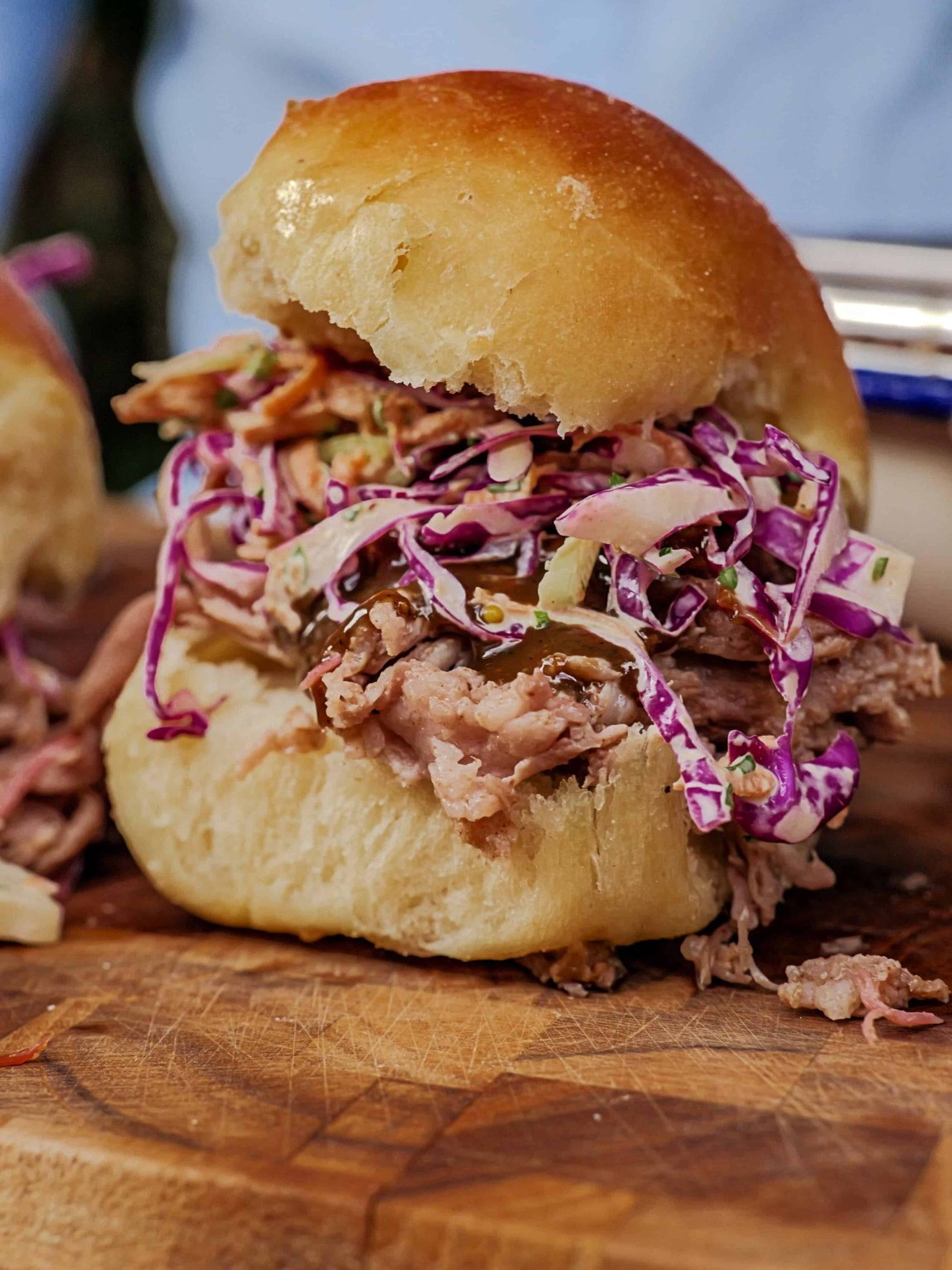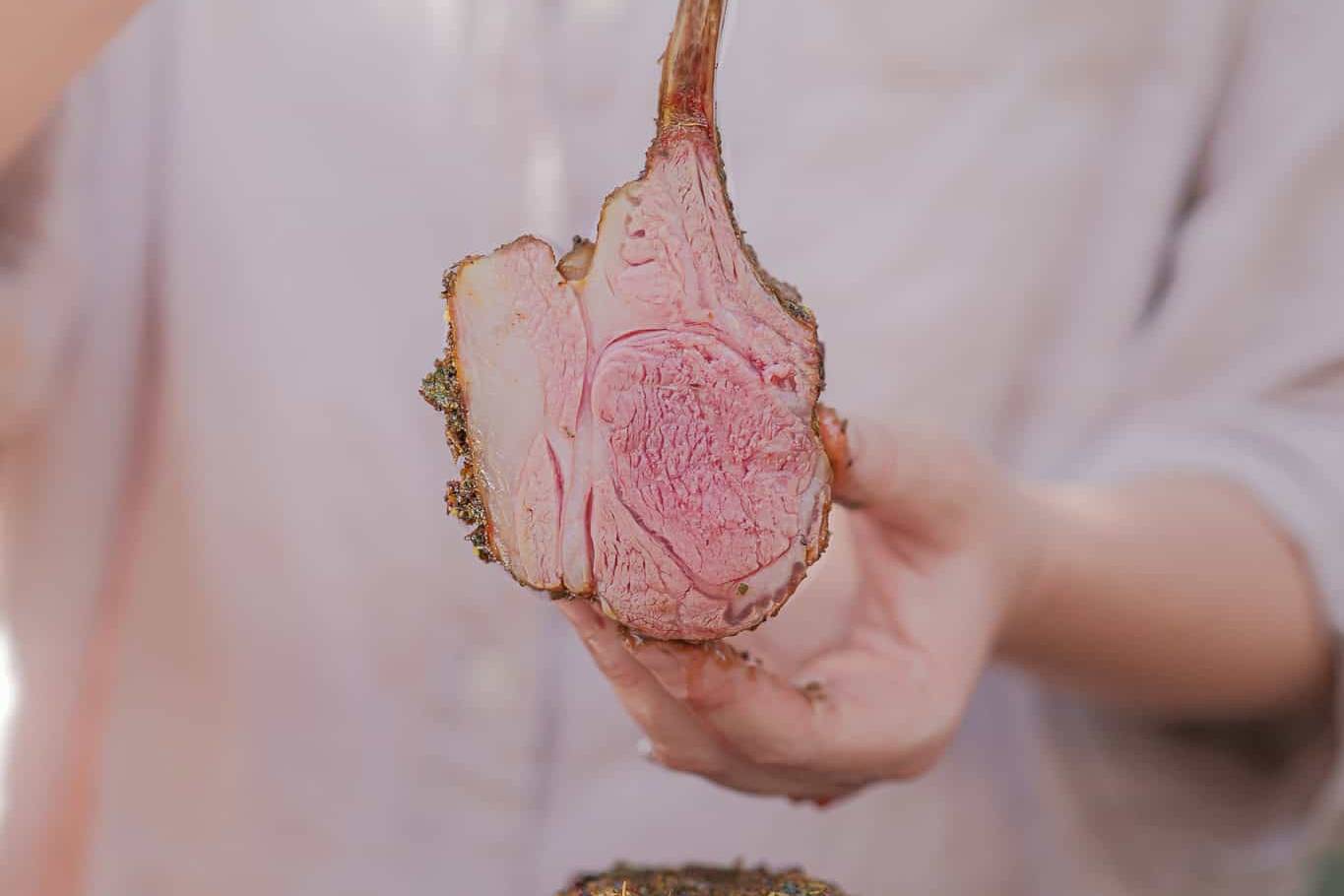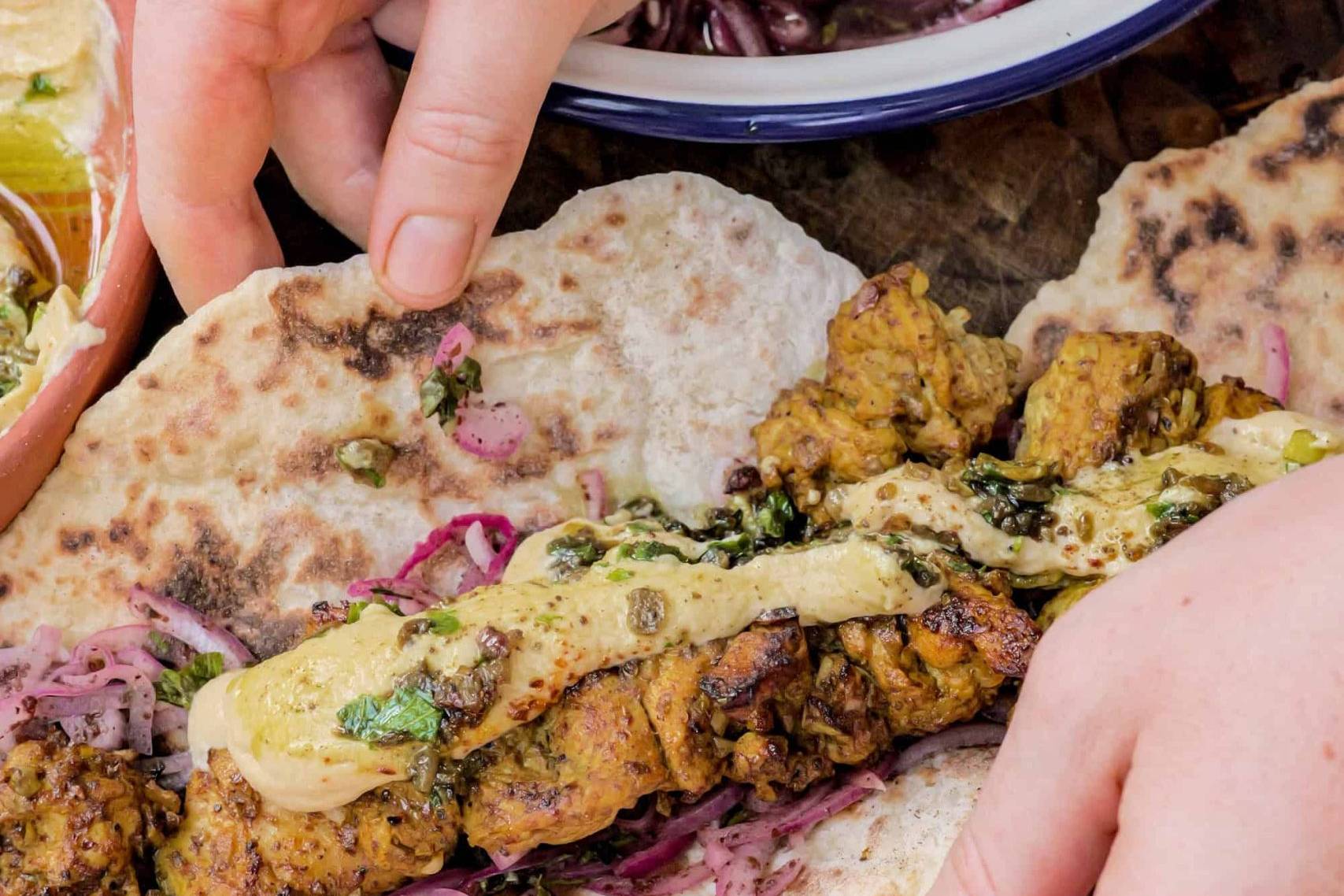
South Carolina Pulled Pork Burgers
Pulled pork is a beloved staple of Southern barbecue, and each state has its unique twist. In this recipe, I’ll share my take on South Carolina Pulled Pork—infusing the tangy, mustard-based sauce that’s quintessential to this region with rich, smoky pork cooked low and slow until it’s fall-apart tender.
This recipe blends tradition with a modern twist to create pulled pork that stays true to the roots of South Carolina BBQ.
About This Recipe
I’ve added a touch of heat and sweetness to the dry rub and the sauce, which complements the bold mustard base that South Carolina is known for. The mustard BBQ sauce provides a tangy contrast to the savoury, smoky pork, giving the dish a flavour that balances acidity, sweetness, and spice. It’s all about taking the classic pulled pork to a whole new level while staying true to what makes South Carolina BBQ so iconic.
What Makes South Carolina BBQ Unique?
South Carolina is known for its mustard-based BBQ sauce, commonly referred to as “Carolina Gold.” Unlike the tomato-based sauces found in other regions, South Carolina’s version is tangy and bright, owing to the use of yellow mustard and vinegar. This style of BBQ focuses on balancing the acidity of the sauce with the rich, smoky flavour of slow-cooked pork, creating a dish that’s both mouthwatering and well-rounded.
Equipment
Lump Charcoal
Iron Bark Wood
Heat Resistant Gloves
Long Tongs
Foil
Roasting Tray
Sharp knife Nomad Series 8″ Chef Knife
Thermapen® ONE
Fireboard 2 Drive
Ingredients
Pork
3 tbsps dry mustard
2 tbsps table salt
1½ tbsps packed light brown sugar
2 tsps pepper
2 tsps paprika
¼ tsps cayenne pepper
1 4.5kg bone-in pork butt, trimmed
Barbecue Sauce
½ cup yellow mustard
½ cup packed light brown sugar
¼ cup distilled white vinegar
2 tbsps Worcestershire sauce
1 tbsp hot sauce
1 tsp table salt
1 tsp pepper
Method
STEP 1Start by trimming any excess fat off the pork butt, leaving a thin layer of fat. This helps keep the pork moist as it cooks. Use a sharp knife to score the fat cap in a criss-cross pattern. This allows the dry rub to penetrate the meat and helps the fat render evenly during cooking.
STEP 2In a small bowl, mix together the dry mustard, salt, brown sugar, black pepper, paprika, and cayenne pepper. Generously coat the pork with the dry rub, ensuring to cover every part of the meat, including the scored fat. Wrap the pork in plastic wrap and refrigerate for at least 4 hours, or overnight, to let the flavours absorb.
STEP 3Preheat your smoker or BBQ to 110°C (225°F) for indirect cooking. Use a combination of charcoal and wood chunks to add a smoky flavour. I used Iron Bark, but Hickory or Applewood are great choices for South Carolina pulled pork.
STEP 4Cook the Pork: Place the pork, fat side up, on the grill or smoker and close the lid. Smoke the pork for 8-10 hours, or until the internal temperature reaches 95°C (205°F). Keep an eye on the temperature and resist opening the lid too often to maintain consistent heat.
STEP 5(Optional): If you’d like, after the pork reaches an internal temperature of 150 and 170°F (65 to 76°C), you can wrap it in foil or butcher’s paper to retain moisture. This step, known as the "Texas crutch," helps speed up the cooking process and keeps the pork tender and juicy.
STEP 6Once the pork reaches 95°C (205°F) and is tender enough to pull apart with a fork, remove it from the smoker and let it rest for at least 1 hour. This allows the juices to redistribute, ensuring juicy pulled pork.
STEP 7In a saucepan, whisk together the yellow mustard, brown sugar, vinegar, Worcestershire sauce, hot sauce, salt, and pepper. Bring the mixture to a simmer over medium heat, stirring occasionally. Let the sauce cook for 5-7 minutes, until it thickens slightly and the flavours meld together.
STEP 8Once the sauce has thickened, remove it from the heat and let it cool. Serve it alongside your pulled pork, or brush it onto the pork during the final stages of cooking for an extra layer of flavour.
Notes
For the juiciest and most tender pulled pork, the best cut to use is a bone-in pork butt. This cut comes from the shoulder of the pig and has the right balance of fat and connective tissue, which breaks down during the slow cooking process to give the pork its tender, fall-apart texture.
If a pork butt isn’t available, a pork shoulder is an excellent alternative. Both cuts have the right amount of marbling to keep the meat juicy during the long cook.
Scoring the fat cap allows the dry rub to penetrate the meat more deeply and ensures that the fat renders down evenly as the pork cooks. The scored fat also helps the pork develop a beautiful crust, or “bark,” which is one of the most flavourful parts of pulled pork.
| Doneness | Internal Temp (°C) | Internal Temp (°F) | Cooking Time |
|---|---|---|---|
| Safe to Eat | 75°C | 165°F | 6-7 hours |
| Ready to Pull | 95°C | 205°F | 8-10 hours |
Pulled pork is best served when cooked to an internal temperature of 95°C (205°F), at which point the collagen and fat have broken down, leaving the pork tender and easy to shred.
The hallmark of South Carolina BBQ sauce is its use of mustard, which gives it a tangy, sharp flavour unlike the sweeter, ketchup-based sauces found in other parts of the U.S. The vinegar adds brightness, while the brown sugar and Worcestershire sauce provide a subtle sweetness and depth of flavour. This sauce perfectly balances the richness of the pork and enhances its natural smoky flavours without overpowering them.
Serve your South Carolina pulled pork with traditional sides like coleslaw, cornbread, or baked beans. The tangy mustard sauce also pairs well with grilled vegetables or even a simple green salad.
For sandwiches, pile the pulled pork high on soft buns, drizzle with extra mustard BBQ sauce, and add a scoop of coleslaw for a perfect bite of Southern comfort.
Did you make this recipe?
Let me know how it turned out for you! Leave a comment below or tag @aldergrills on Instagram.




